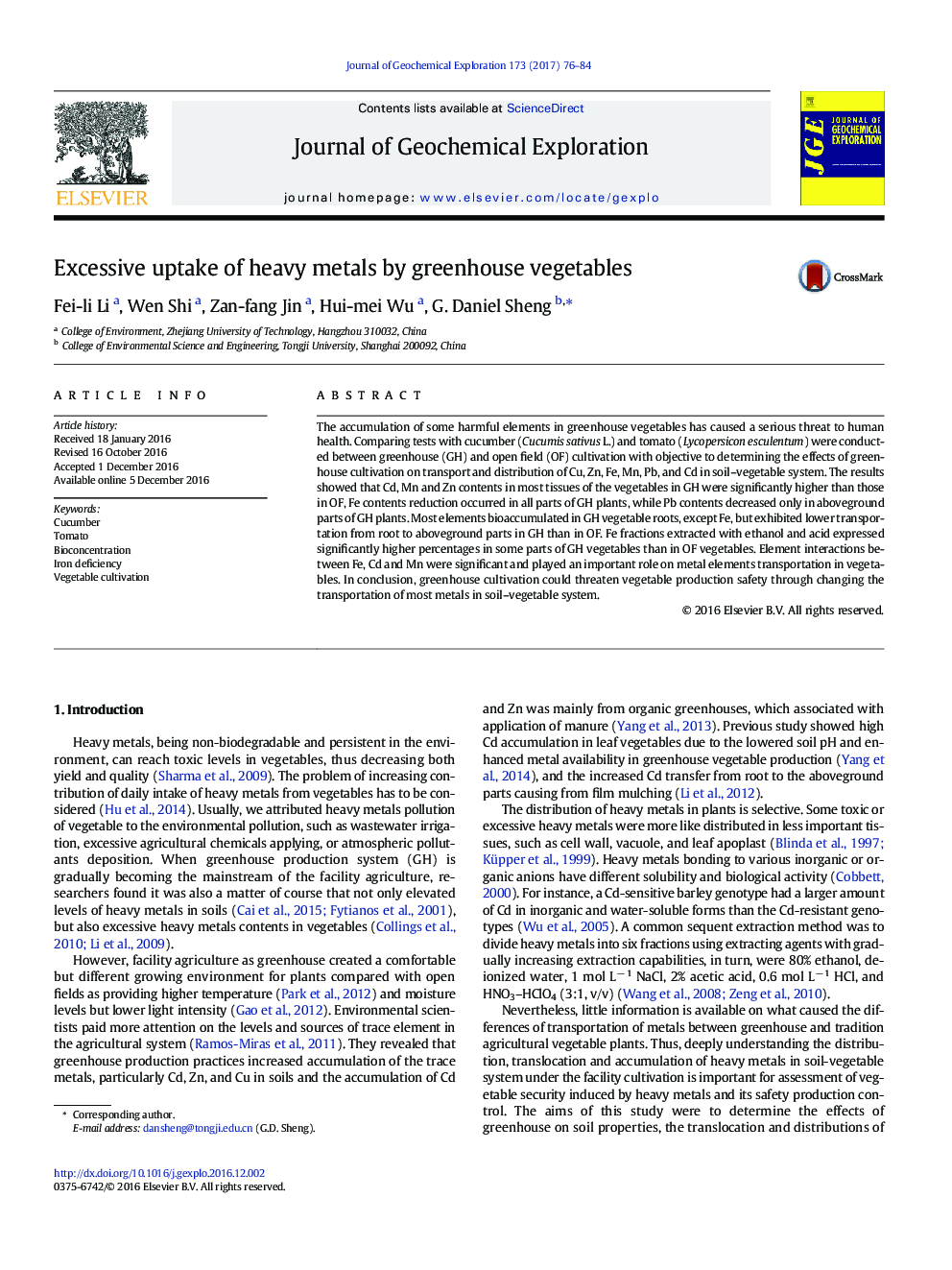| Article ID | Journal | Published Year | Pages | File Type |
|---|---|---|---|---|
| 5754590 | Journal of Geochemical Exploration | 2017 | 9 Pages |
â¢Greenhouse cultivation increased metals' contents in vegetables, except Fe and Pb.â¢It also increased metal BCFs, but decreased most of their TFs in aboveground parts.â¢Decreased soil pH could not explain the reduction of Fe content in GH vegetables.â¢The reduced illumination was responsible to Fe deficiency of GH vegetables.â¢Element interactions might enhance the accumulation of Cd in GH vegetables.
The accumulation of some harmful elements in greenhouse vegetables has caused a serious threat to human health. Comparing tests with cucumber (Cucumis sativus L.) and tomato (Lycopersicon esculentum) were conducted between greenhouse (GH) and open field (OF) cultivation with objective to determining the effects of greenhouse cultivation on transport and distribution of Cu, Zn, Fe, Mn, Pb, and Cd in soil-vegetable system. The results showed that Cd, Mn and Zn contents in most tissues of the vegetables in GH were significantly higher than those in OF, Fe contents reduction occurred in all parts of GH plants, while Pb contents decreased only in aboveground parts of GH plants. Most elements bioaccumulated in GH vegetable roots, except Fe, but exhibited lower transportation from root to aboveground parts in GH than in OF. Fe fractions extracted with ethanol and acid expressed significantly higher percentages in some parts of GH vegetables than in OF vegetables. Element interactions between Fe, Cd and Mn were significant and played an important role on metal elements transportation in vegetables. In conclusion, greenhouse cultivation could threaten vegetable production safety through changing the transportation of most metals in soil-vegetable system.
Graphical abstractDownload high-res image (268KB)Download full-size image
